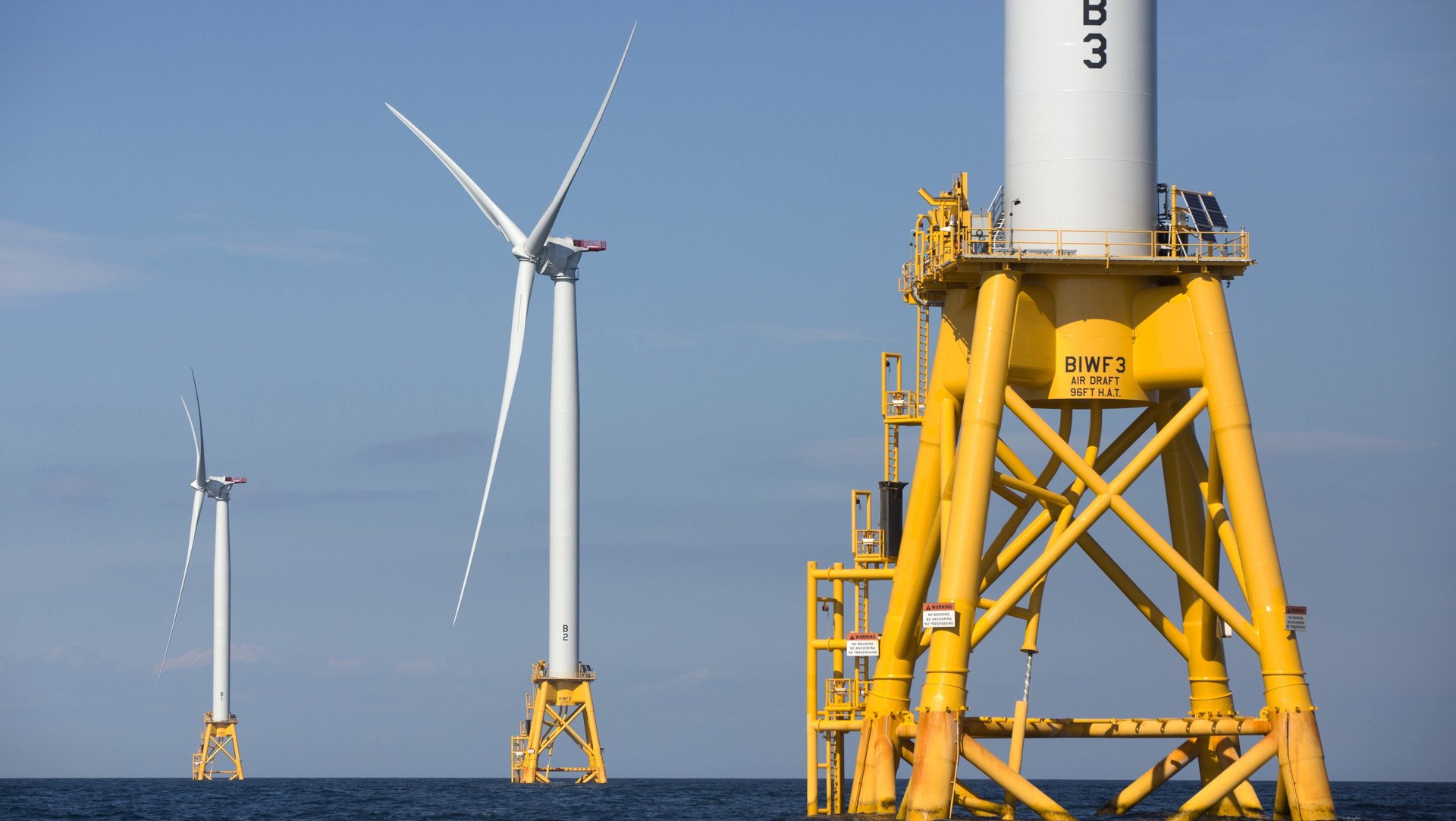The first US offshore wind farm goes live as renewables race to underprice fossil fuels in age of Trump
Rhode Island flipped the switch on the country’s first offshore wind farm on Dec. 12. When the five turbines in the Block Island Wind Farm reach full power next month, renewables will have notched another win in the effort to out-compete fossil fuels on the open market.


Rhode Island flipped the switch on the country’s first offshore wind farm on Dec. 12. When the five turbines in the Block Island Wind Farm reach full power next month, renewables will have notched another win in the effort to out-compete fossil fuels on the open market.
The 30MW installation represents the hopes of the wind and solar industry as it braces for a Trump Administration intent on axing tax incentives for renewables—while boosting those enjoyed by the fossil fuel industry. The renewable energy industry’s future depends on beating fossil fuels on the open market. Now, it’s finally winning.
“Our business is driven principally by what is happening in very individual markets,” said the chief executive of the wind farm’s operator Deepwater Wind, Jeff Grybowski in the Washington Post. “It’s not driven very much by national policy.”
That’s a sea change from just a decade ago, when incentives were essential to keeping the industry afloat. Now, the cost of electricity from wind and solar is falling faster than even the most aggressive analysts’ had predicted. Clean energy investment is outpacing gas and coal two-to-one globally, reports Bloomberg, and electricity prices from renewables are expected to keep falling as they displace more coal, nuclear, gas and other sources, according to the the International Renewable Energy Agency.
In the chart above, average cost is per kilowatt-hour (kWh). Concentrating solar power (CSP) use mirrors to concentrate the energy from the sun to drive traditional steam turbines. Photovoltaic (PV) solar power is generated using solar panels made of semiconductors to convert light directly to electricity.
In the past decade, the share of global power generation from wind and solar has doubled every three years or so. Incentives, in many cases, have become just icing on the cake. Even offshore wind, which is relatively expensive to build, has at least 11 “active commercial leases” according to the US government with 86GW of offshore wind expected to be installed by 2050. That’s about 3,000 times the capacity of Block Island Wind Farm.
For now, electricity from Rhode Island’s offshore wind farm is not cheap when compared to the prices most US households see on their monthly bills—but it is by far the most affordable option for those living on nearby Block Island, reports the Providence Journal, and surplus power is sold to the mainland. And as other installations scale up, overall offshore wind prices in the US are expected to fall about 30% in the next two decades.
Trump has called wind power “ugly,” “obsolete” and “terrible for the environment,” while fighting a wind farm planned near his golf course in Scotland. And he promised during his presidential campaign to take away renewable energy tax credits and give them to coal. But that doesn’t change the reality: prices for wind and solar in some places is already cheaper than coal. Attempts to punish renewable energy won’t do anything to help the coal industry, says Sam Jaffe, managing director of Cairn Energy Research Advisors. Removing renewable energy tax credits will hurt the industry, leading to thousands of lost jobs and bankruptcies for companies, but it won’t kill it.
Meanwhile, the political winds in the traditionally fossil-fuel friendly GOP have already shifted. As wind power has expanded across conservative states in the midwest, bringing cheap power and well-paying jobs, some Republicans now see wind subsidies as untouchable. “If [Trump] wants to do away with it, he’ll have to get a bill through Congress, and he’ll do it over my dead body,” Senator Chuck Grassley (R-Iowa) told Yahoo News in August.
As market forces take control in the US, it’s possible the country’s light touch on renewable incentives—relative to many European countries, for example—will prove a blessing in disguise even when the political climate turns against them. “If you look at the America’s approach to renewables, we have always done the least subsidized approach,” said Jaffe. “A lot of people have complained, but right now that feels pretty good.”